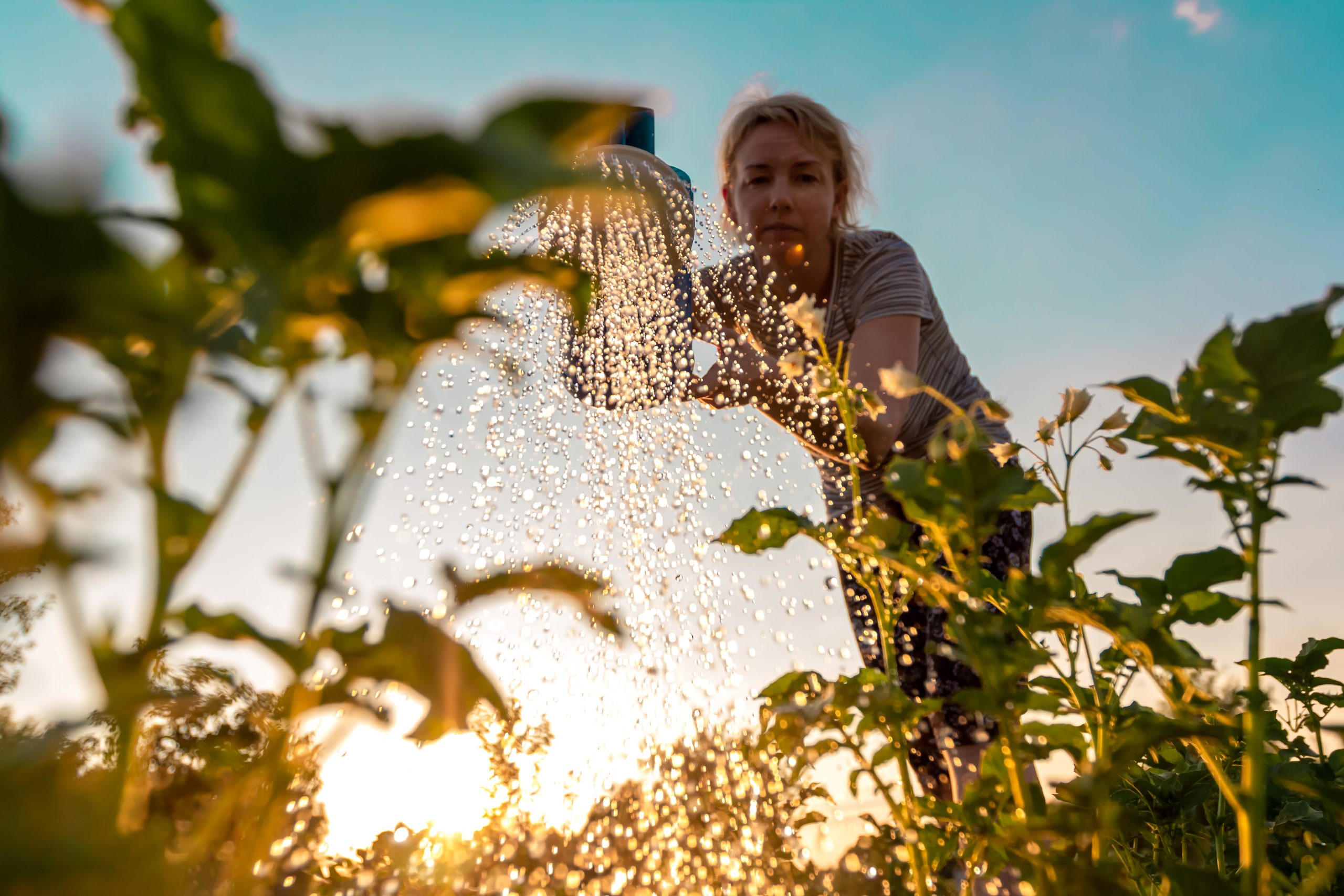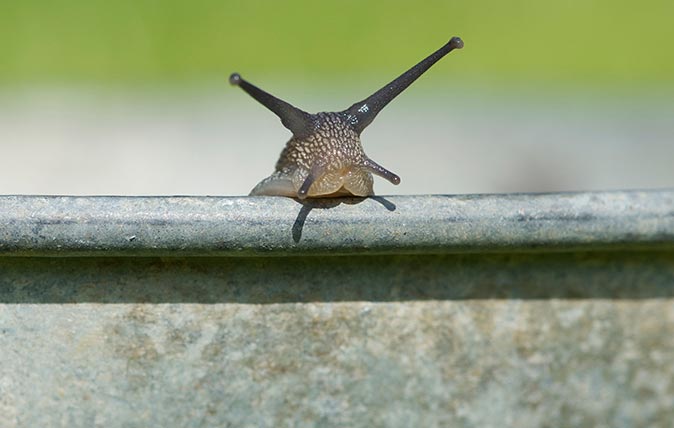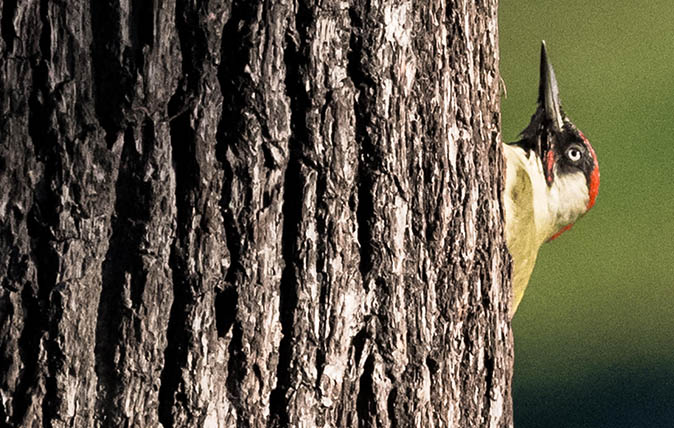Curious Questions: Who invented the watering can?
You might take it for granted, but the watering can transformed the art and science of gardening — but who came up with its perfect design, which has been essentially unchanged for over a century? Martin Fone, author of More Curious Questions, investigates.


The German town of Giessen is home to one of the world’s most curious museums, the Giesskannenmuseum. Situated in Sonnenstrasse, near the town’s famed botanical gardens, it celebrates the common-or-garden watering can, be they ancient or modern, valuable or cheap, large or small, and boasts over a thousand exhibits. Founded in 2011, it is in the perfect spot. After all, giessen means ‘to sprinkle’.
As plants draw up moisture from the surrounding soil and compost through their roots, the watering can is an invaluable part of a gardener’s armoury, allowing them to point the flow of water precisely where it is needed. A hose pipe, a more scatter gun approach, often means that water lands on the foliage, increasing the risk of scorching as the sun’s rays increase in intensity. Our six have made a small but not insignificant contribution to a global lawn and garden watering equipment market worth $4.9 billion in 2019.
A gardener’s preoccupation with ensuring that their plants do not wilt through want of water is not a modern phenomenon. In the ruins of Herculaneum, destroyed during the eruption of Mount Vesuvius in 79AD, archaeologists have found vessels which were used to transport water for watering gardens.
However, if we define a watering can as a portable container with a handle, a hole for filling it up with water, and a further set of holes through which the contents can be sprinkled, then its prototype can be traced to around the 15th century. Its primary use, though, was not to water plants but to keep floors clean. Straw and rushes, used to cover floors, were notorious for collecting dust, amongst other things. Periodic watering kept the dust levels down and stopped it from flying around when it was time to replace the covering.
Typically, a chantepleure was used, an earthenware pot shaped like a bell or a jug, with a handle which arched from the vessel’s body to the top of its narrow neck. There was a small hole at the top of the vessel and a series of holes at the bottom.
Its use persisted well into the 19th century, William Whitley recording in his Art of England 1821-37 (1930), that ‘the flooring of the [London Royal] Academy in 1833…was nothing but bare boards, watered every morning to keep the dust down. The watering pot was used in similar fashion in… the National Gallery’.

Placing your thumb over the top created enough internal pressure to keep the water inside, but as soon as you lifted it, the contents would flow out through the holes in the bottom of the vessel. With the growth in interest in gardening in the 16th century, horticulturalists were quick to see that it had an application in solving the perennial problem of how to ensure plants were adequately watered.
Exquisite houses, the beauty of Nature, and how to get the most from your life, straight to your inbox.
Thomas Hill, in his The Gardener’s Labyrinth (1577), gave precise instructions on how to use what he called ‘the common watering potte for the Garden beddes’. The Florists Vade Mecum (1638) did likewise, leading its author to observe that ‘this serves to water young and tender seedlings for by the motion of your thumb you may cause the water to fall gently upon them more or less as you shall desire’. Unsurprisingly, very few earthenware thumb-pots have survived and so command quite a premium, one selling for a record price of £5,040 at Sotheby’s in Billingshurst on September 23, 2003.
A design more recognisable to modern eyes as a watering can, a term first used by Timothy Keeble in his diary in 1692, emerged around the same time. Initially it was jug-shaped with a large hole at the top for receiving water and a handle running from the top to middle of the pot’s back. Instead of holes at the bottom, it had a funnel leading to a perforated spout. This spout, known today a ‘rose’, a word derived from the French noun arroseur meaning sprinkler, made strong thumbs redundant and reduced the opportunity for mishaps.
By the time Louis Liger D’Auxerre was waxing lyrical about the watering-pot in his The Compleat Florist (1706), its jug-shape had become a canister with a cone on top. ‘Nothing’, he declared, ‘is more useful in a Garden than a Watering-Pot, so that a Gardner cannot be without it. It imitates the Rain falling from the Heavens; when being bended down, it spouts forth Water thro’ a thousand holes, in a sort of Head that’s made to it. By this means, it succours the Plants in the most beneficial manner’.
As technology improved, earthenware gave way to copper and from around 1850, iron, brass, and zinc were increasingly deployed. However, the intrinsic design remained the same, that is until John Haws enters our story.
The Clapton-born Haws was a civil servant posted to Mauritius; by his own admission he was an unsuccessful gardener, but he started to grow vanilla plants as a hobby. He was exasperated by the current design of watering can, as the single large handle arching from front to back made it awkward to balance and manoeuvre, especially when trying to reach those plants on the upper shelves in a greenhouse. In 1884 he decided to see whether he could improve upon the design.
On his return to England, he found that the country was bitten by the gardening bug. Glass was now more widely available and cheaper, making greenhouses more affordable, sparking an interest in growing exotic and delicate plants which were then transferred to ornamental gardens and borders. These delicate plants required regular watering by hand.
Seizing the moment, Haws applied for a patent for his new design for a watering can, claiming that ‘this new invention forms a watering pot that is much easier to carry and tip, and at the same time being much cleaner, and more adapted for use than any other put before the public’.

The Patent Office agreed, awarding Haws his patent in 1886. His design incorporated two significant features, doubling the number of handles so that there was a ‘carrying’ handle at the top and a ‘tipping’ handle at the back, making it easier to manoeuvre and allowing a more even flow of water on to the roots of the plants, and placing the funnel at the bottom of the can to make it easier to reach the higher shelves.
Setting up a factory in Clapton, his take on the watering can soon found favour with leading gardeners, establishing the reputation of Haws for goods of the highest quality. He was awarded the Royal Horticultural Society medal, to be presented at the first ever Chelsea Flower Show in 1913, but, sadly, he died before he could receive it.
Arthur moved the business to Bishops Stortford and maintained his uncle’s attention to detail, even employing a worker whose sole task was to punch every hole into each rose, spaced and tapered to perfection. No wonder the company is still trading and has maintained its reputation for making watering cans of the highest quality.
While Haws is recognised as the father of the modern-day watering can, his design template, which is still used today, was but one step in the development of this most useful of gardeners’ tools.
Martin Fone is the author of several books including 50 Curious Questions and 50 Scams and Hoaxes. His latest book, More Curious Questions, is out now.


Credit: Alamy
Curious Questions: Does throwing a snail stop it from returning to your garden?
The oldest gardeners' remedy for getting rid of snails is also the simplest: throw them as far away as you

Credit: Alamy
Curious Questions: What is a weed?
They're the bane of gardeners' lives, but do they even exist, at least in any consistent and logical sense? Martin Fone

Credit: Alamy
Curious Questions: Why do maps include streets, and even entire towns, which don't exist?
The mysteries of mapping have intrigued Martin Fone since he was a boy — and one of the great curiosities is

Curious Questions: Why don't woodpeckers hurt their heads?
Woodpeckers submit their poor heads to punishment which would devastate most creatures, yet as far as we know they fly
After graduating in Classics from Trinity College Cambridge and a 38 year career in the financial services sector in the City of London, Martin Fone started blogging and writing on a freelance basis as he slipped into retirement. He has developed a fearless passion for investigating the quirks and oddities of life and discovering the answers to questions most of us never even think to ask. A voracious reader, a keen but distinctly amateur gardener, and a gin enthusiast, Martin lives with his wife in Surrey. He has written five books, the latest of which is More Curious Questions.
